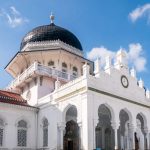Executive Summary
- Much discussion concerning heritage matters in the academic world centres on two major
issues: heritagisation and commodification - To better preserve heritage, it is encouraged that the international management guidelines and recommendations be incorporated into local legal provisions for locals to be equipped with procedural safeguards. Concurrently, a framework can be developed to better address local issues, and more on-the-ground case studies can in turn be provided for the refinement of international protocols
- However, heritage preservation must maintain some flexibility, especially with respect to cultural practices. It is a tall order for government agencies to play the advocate’s role in ensuring that heritage management is carried out in an effective but open-ended manner, and to encourage the participation of stakeholders while still respecting their diverse views
- In the future, the development of culture and the creative industry may profit local businesses and communities. However, the issue of copyright is expected to be a foreseeable point of contention. Copyright grants the product designers exclusive rights; conversely, it also restricts indigenous communities from claiming ownership over their heritage and cultural practices
Introduction
The 2003 Convention for the Safeguarding of the Intangible Cultural Heritage shifted the trend of heritage preservation from the appreciation of buildings or artifacts, to the safeguarding of traditions, knowledge, practices and skills of local communities. This is in tandem with the rising threat to local culture and heritage over the last 20 years due to mounting pressures of urbanisation.[1]
In the academic world, much discussion concerning heritage matters centres on two major issues: heritagisation and commodification. Heritagisation refers to the transformation of objects, places and practices into cultural heritage as values are attached to them, essentially describing heritage as a process.[2] To identify appropriate measures for heritage preservation, issues of identity, culture, social network and interaction are examined in great detail by stakeholders.
In tourism, this concept pulls double-duty in promoting heritage values, and sustaining income for preservation and safeguarding works. However, therein lies the issue of heritage commodification by income-earning locals as well. Heritage products are not necessarily limited to souvenirs only, but also include traditions or living expressions inherited and passed down, such as oral traditions, performing arts, social practices, rituals, festive events, knowledge and practices concerning nature and the universe or the knowledge and skills needed to produce traditional crafts.[3]
This ISSUES gives a brief introduction on contemporary heritage studies, while highlighting selected pertinent issues to be discussed for the future development of Malaysian heritage.
Localising the Concept of Heritage
Discussions about the concept of heritage and the regulations to protect it extend beyond the United Nations. Heritage was first defined in the Athens Charter for the Restoration of Historic Monuments in 1931. Its description was later expanded in resolutions such as The Venice Charter 1964, The Washington Charter 1987 and The Nara Document on Authenticity 1994.[4]
The above are examples of consensus made between international groups, authorities and non-governmental organisations. Nevertheless, the concept of heritage can only be perceived as such when it is recognised by the communities, groups or individuals who create, maintain and transmit it.[5]
To better preserve heritage, it is thus encouraged that the international management guidelines and recommendations be incorporated into local legal provisions for locals to be equipped with procedural safeguards. Concurrently, a framework can be developed to better address local issues, and more on-the-ground case studies can in turn be provided for the refinement of international protocols.
An example of heritage preservation in Japan shows the synergy that is possible to achieve between international management guidelines and local legal provisions. Japan began safeguarding their “intangible heritage” with its 1950 Law for the Protection of Cultural Properties. The legislation was pivotal in Unesco’s consideration of humans as carriers in the reproduction and transmission of generational heritage. Ultimately, Unesco developed its own mechanism, and the Japanese Washoku (“food of Japan”) was incorporated into the Representative List of the Intangible Cultural Heritage of Humanity in 2013, in spite of it not being categorised as an intangible heritage in their codex.[6]
Heritage preservation is essential in capturing human creativity, and in highlighting outstanding representations of a given culture, be it a type of building and a human. However, it is important that the definition maintain some form of flexibility, especially with respect to cultural practices where there is a decline in demand.[7] The rattan craftsmen of George Town are a case in point. More often than not, existing rattan shops sell imported rattan products now since orders from customers are few and far between. It is, therefore, a tall order for government agencies to play the advocate’s role in ensuring that heritage management is carried out in an effective but open-ended manner, and in encouraging the participation of stakeholders while still respecting their diverse views.
For example, food is hard to define in heritage terminology because cuisines have their own distinct histories and their ingredients, tastes and social roles evolve under various circumstances. The idea to identify and preserve the authenticity of food seems to imply a timeless perspective on profoundly historical processes.[8] Thus, foods on the Representative List of the Intangible Cultural Heritage are not incorporated based on authenticity alone, but also on the cultural practices attached to their preparation, serving and eating. The Gastronomic Meal of the French conferred as an intangible heritage in 2009 was highlighted as a customary social practice for celebrating important moments in the lives of individuals and groups.[9] The Mediterranean Diet, inscribed the same year, underlines the set of skills, knowledge, rituals, symbols and traditions of the related communities who prepare it.[10] The previously mentioned Washoku was also highlighted as a social practice related to the production, processing, preparation and consumption of food in Japan.[11]
For the community, being recognised as a World Heritage is an honor for their culture and identity. However, the complexity of the issues of definition and preservation behind it are often not widely discussed or highlighted. In this regard, some policy studies have critiqued the assumption of “policy” as a legal-rational way of getting things done. It is argued that most of the long-established frameworks may fail to capture current dynamics in the world but actually obfuscate the understanding of many policy processes.[12] For this reason, more in-depth studies are required to review the effectiveness of heritage management plans, and to find more beneficial ways of keeping to the ideals of heritage preservation.
Gentrification and Cultural Property Rights
Gentrification is a global phenomenon in many World Heritage Sites. This results in the displacement of long-term residents from their places of birth and causes erosion to the local culture and heritage. On the upside, residents who choose to remain within the heritage zones are either fully or partially involved in the tourism industry for financial sustenance, and through them the rights of cultural properties are claimed as the population’s own.
However, gentrification of these sites also connotes that the cultural “products” offered are no longer as authentic as previously thought; while business-savvy entrepreneurs continue to reap the profits from rising rents and maintenance fees.
It is predicted that more discussions regarding cultural property rights in George Town and Melaka [13] will arise in the future. For example, the Penang Art District is envisioned by the state government to be a hub for contemporary arts and culture, as well as an initiative to catalyse the
economic growth of the local creative industry.[14]
Additionally, the George Town World Heritage Incorporated (GTWHI) is looking to work with local artisans and designers to come up with signature George Town products; product sales will then be channeled back to GTWHI for the management of the heritage site.[15]
These initiatives stand to benefit local businesses and communities. Per contra, the issue of copyright is expected to be a foreseeable point of contention. Copyright grants the product designers exclusive rights; conversely, it also restricts indigenous communities from claiming ownership over their heritage and cultural practices. Therefore, the legal frameworks necessary for the permanent protection of entire cultures will inevitably require greater involvement of government agencies in the business of determining who is a native person and what exactly qualifies as indigenous knowledge.[16]
In 2007 the Taiwanese government attempted to legislate the Protection Act for the Traditional Intellectual Creations of Indigenous Peoples [17] to protect traditional intellectual creations, and promote the cultures of indigenous peoples. The Act secures the permanent right that the indigenous communities have over their own creations; however, they must first go through an application process. Additionally, although Taiwan’s Status Act for Indigenous Peoples [18] assists in resolving problems in identifying beneficiary groups, many still have doubts about the listing of the indigenous peoples’ public assets in the application process; it is argued that these actually belong to the community as a whole and were inherited through generations. Another critique of the system concerns allowing outsiders to review submitted applications to obtain property rights.
Indonesia, on the other hand, revised its intangible cultural expressions to national intellectual and cultural properties. Its copyright law seeks to transform and strengthen the state’s control over cultural art practices to serve nationalist goals. Western property models are rebuffed by Indonesian regional artists and artisans who do not view their local knowledge and practices as properties subject to exclusive claims by individuals or corporate groups (the state included), but rather, as properties belonging to the country.[19]
In Penang, when street arts drawn by Lithuanian artist Ernest Zacharevic became a trademark of George Town’s identity and branding, copyright infringement claims were not filed against locals who reproduced the artist’s artworks on souvenirs they sold to tourists. Whether or not this is reasonable, there is rarely any discussion about intellectual property rights in Malaysia, not to mention collective cultural rights.
Conclusion
Heritage preservation in Malaysia often becomes a means of resistance to further urbanisation; its main purpose is to rally and to educate the public about the conservation of the country’s living legacy. But for the endeavour to be sustainable and to succeed, heritage researchers are encouraged to conduct extensive historical studies and to expend resources to raise societal understanding, and in the same vein, add value to the content of local heritage.
For conservation measures to be productively implemented, it is imperative that there be mutual understanding and collaboration among stakeholders. Only then can the National Heritage Department gazette a place as a national heritage site following the state’s consent and endorsements from the local authorities and referred community.
However, there are still no regulations in the National Heritage Act 2005 to define, classify and discuss the preservation of entire urban heritage sites like George Town and Melaka, despite their inscriptions as World Heritage Sites for the last decade. Government agencies should be proactive in leading the dialogue among interest groups, and to look for a win-win situation whereby the indigenous residents are allowed to maintain their sense of identity, while simultaneously aiding economic growth.
[1] Habitat III Issue Papers: 4- Urban Culture and Heritage. United Nations Conference on Housing and Sustainable Urban Development. 2016, pp. 2.
http://habitat3.org/wp-content/uploads/Habitat-III-Issue-Paper-4_Urban-Culture-and-Heritage-2.0.pdf
[2] Jennie Sjoholm. Heritagization, Re-Heritagization and De-Heritagization of Built Environment: The Urban Transformation of Kiruna, Sweden. Lulea University of Technology, 2016, pp. 26.
[3] https://ich.unesco.org/en/what-is-intangible-heritage-00003
[4] Charters and other Doctrinal Texts: https://www.icomos.org/en/resources/charters-and-texts
[5] What is Intangible Cultural Heritage? https://ich.unesco.org/en/what-is-intangible-heritage-00003
[6] Huang Jan-Yen, The Laws of the Safeguarding of Intangible Cultural Heritage in Japan and Korea: System, Knowledge and Social Factors. Journal of Culture Resources, No. 10, 2016, pp. 26.
[7] Barbara Kirshenblatt-Gimblett, 2004, Intangible Heritage as Metacultural Production. Museum International Vol. 56, No. 1-2, page 56.
[8] Arjun Appadurai, 1986, On Culinary Authenticity, Anthropology Today, Vol 2, No 4, pp 25.
[9] Gastronomic meal of the French: https://ich.unesco.org/en/RL/gastronomic-meal-of-the-french-00437
[10] Mediterranean Diet: https://ich.unesco.org/en/RL/mediterranean-diet-00884
[11] Washoku, traditional dietary cultures of the Japanese, notably for the celebration of New Year:
https://ich.unesco.org/en/RL/washoku-traditional-dietary-cultures-of-the-japanese-notably-for-the-celebration-of-new-year-00869
[12] Janine R Wedel, Chris Shore, Gregory Feldman and Stacy Lathrop. Toward an Anthropology of Public Policy. Annals of the American Academy of Political and Social Science, Vol. 600, The Use and Usefulness of the Social Sciences: Achievement, Disappointments and Promise, 2005, pp. 30.
[13] Melaka and George Town, Historical Cities of the Straits of Malacca: https://whc.unesco.org/en/list/1223
[14] About the Art District: http://penangartdistrict.com/about/
[15] Penang Aims to make George Town a Centre of Excellence for Heritage, Malay Mail, 3 October 2018:
https://www.malaymail.com/s/1678725/penang-aims-to-make-george-town-a-centre-of-excellence-for-heritage
[16] Michael F. Brown, Can Culture Be Copyrighted? Current Anthropology, 1998, Vol. 39, No. 2, 204
[17] Protection Act for the Traditional Intellectual Creations of Indigenous Peoples: https://law.moj.gov.tw/ENG/LawClass/LawAll.aspx?PCode=D0130021
[18] Status Act for Indigenous Peoples: https://law.moj.gov.tw/ENG/LawClass/LawAll.aspx?PCode=D0130001
[19] Lorraine V. Aragon, Copyrighting Culture for the Nation? Intangible Property Nationalism and the Regional Arts of Indonesia, 2012, Vol. 19, pp. 292.
Managing Editor: Ooi Kee Beng, Editorial Team: Regina Hoo, Nur Fitriah, Ong Wooi Leng
You might also like:

Evaluating the Penang South Reclamation (PSR) Project According to the United Nations’ Sustainable D...

Malaysia’s Northern States: Improving Competitive Advantages and Industrial Growth

National Unity 2.0: A Necessary Upgrade and Revival in Malaysia’s Nation-building Ambitions and Appr...

Perbandingan Hukuman Hudud untuk Kesalahan Sariqah dan Hirabah di Brunei, Aceh, Kelantan dan Terengg...

Imagine an Education Hub: Leveraging Penang’s International School Ecosystem


